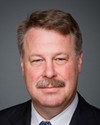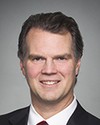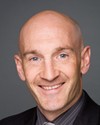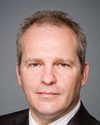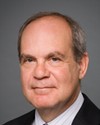I would, thank you very much. As you said, my name is Catherine Stewart. I work with the Living Oceans Society. I'd like to thank the committee for this opportunity to speak with you about this really important issue and thank you for your efforts in studying it.
We also work with a coalition for aquaculture reform. I know you've spoken to a couple of my colleagues, including Kelly Roebuck the other day, who works at the Living Oceans Society; and David Lane from the T. Buck Suzuki Environmental Foundation, whose group is also a member of the coalition. I just wanted to start by emphasizing the name of our coalition, the Coastal Alliance for Aquaculture Reform. All of the member groups of CAAR, which started in the year 2000, came to the table with the firm belief that aquaculture can make a valuable contribution to society, that there is a need for fish protein in the world, and that aquaculture is an ancient practice in many regions and can be done in a more sustainable fashion.
Our concern is with how we're performing aquaculture—in British Columbia particularly—and where. With regard to how the fish are raised, we believe that open net cages are a problem, and with regard to where they are raised, we believe that open net cages on wild salmon migration routes are an issue of serious concern.
I know the issue of scientific proof has come up frequently. I'm not a scientist; I studied English at the University of Winnipeg, but I've had the privilege over the years of working with many scientists. If there's one thing I have learned from all of them, whether they work for industry, government, or academia, it's that scientific proof is extremely hard to come by and very rare. Generally what scientists are looking at in making decisions and recommendations is the weight of scientific evidence. There will always be two sides to the equation. You may have 2,500 climatologists saying that human-caused climate change is an issue, but you'll always have others who will question whether that is the case.
We believe that in the case of open net cage salmon aquaculture, the weight of evidence is abundant that it is having negative impacts on ecosystems and wild salmon stocks. I'm sure you're familiar with the study that was done by Ransom Myers and Jennifer Ford at Dalhousie University that looked at aquaculture operations around the world and found declines in wild salmon everywhere that net cages were operating.
I think it's also important to stress that DFO does acknowledge the risk. If we look at DFO's wild salmon policy, on page 31, it states,
It is recognized that aquaculture operations, as with other human activities, pose risks to the natural environment. These potential impacts to wild salmon include: the chance of disease and parasite transfer, competition and genetic effects of escapes, and physical disturbances in near-shore environments.
It also states, on page 34,
If specific Conservation Units of wild salmon are threatened by development proposals or other human activities, corrective actions will be taken under Section 35 (fish habitat) of the Fisheries Act, or longer-term solutions will be pursued....
We heartily applaud the committee's efforts to study those longer-term solutions. I think it's also really important to recognize that DFO openly acknowledges the problems associated with aquaculture in international fora. For example, in the department's report to the North Atlantic Salmon Conservation Organization in January 2010, it states, and I quote,
Aquaculture information is mainly provided as it relates to marine-based activity, as it is widely accepted that this component of salmon farming comprises the primary risks to wild salmon.
That's DFO's own language. So it's widely accepted. It would be hard for it to pretend otherwise, particularly in meetings with governments like the Government of Norway, which not only openly acknowledges the risks associated with net cage aquaculture and their impacts on wild salmon but has also designated two river and fjord systems as national salmon rivers and prohibited aquaculture activity in those areas.
What we're doing in Canada right now is trying to manage the risks associated with net cage salmon farming. We're spending millions of dollars to do that. Risk management is an extremely tricky business. One of the things we do know is how little we know, how much there is about the natural world and functioning ecosystems that we don't truly understand. Nonetheless, the Government of Canada and the provinces have incurred, and are incurring, substantial costs in trying to manage the risks of net cage aquaculture, in conservation and protection and enforcement activities, fish health monitoring and analysis, on-site inspections, data collection, reporting, and all the costs associated with the investigation of periodic offences.
Then there are the invisible subsidies. I think it's important to acknowledge those as well when we're trying to look at the balance of costs between closed containment and open net cages. For example, for the last 20 years or more, DFO has been funding research into transgenic salmon by Bob Devlin at the West Vancouver laboratory. Growing a bigger fish faster is not in the interests of the conservation and protection of wild salmon, but rather a benefit to the aquaculture industry.
Another hidden subsidy to the net cage industry is externalized costs, and I know Ms. Murray has addressed this to some degree previously. The deposition of waste into our marine ecosystems is basically a cost that the current net cage industry does not have to address. It's absorbed by our ecosystem; it's absorbed by the citizens of Canada. There are no end-of-pipe fees or fines for smothering the benthic environment or for wastes that can be carried by tides away from the farm but deposited on clam beaches that were harvested by first nations for generations in the past.
These externalized costs are borne by us, and they include the deposition of chemicals, and antibiotics in waste feed, and copper-based antifoulants to prevent fouling of the nets. They may very well be having a profound effect on species and ecosystems, and we're learning more and more about what those impacts are. A recent study published by the Government of British Columbia found elevated levels of copper and zinc in the benthic environment adjacent to a farm on the west coast of Vancouver Island that had not been in operation for 15 years. So these effects can be long lasting as well.
Also, when we look at the relative merits of closed containment and open net cages, we need to look at the way the Canadian government and provinces have been supporting the aquaculture industry through taxpayer-funded granting programs and government run initiatives, including $9.4 million for the Atlantic Canada Opportunities Agency for the development of aquaculture on the south coast of Newfoundland; $600,000 a year for the aquaculture partnership program; $14.4 million over four years for Aquanet, which has now expired; and recently more than a million dollars for CAIA, the Canadian Aquaculture Industry Alliance, to generate awareness and new sales of aquaculture products.
Even our government officials are spending taxpayer dollars to assist industry marketing efforts. I totally agree with Canadian government support for Canadian business. What I struggle with is that when businesses are having a negative environmental impact and citizens groups like CAAR make an effort to inform buyers of the non-sustainability of the product, and then the director of the aquaculture program for DFO flies to California to meet with Safeway to tell them that our information is inaccurate and that the aquaculture industry in Canada is entirely sustainable. We don't think that's necessarily the case, and we don't think it's the best use of taxpayer dollars.
Another example was the granting of $250,000 to a major B.C. aquaculture company for research on kudoa. Kudoa is not a problem for the ecosystem; kudoa is a problem for the industry, and we feel those costs should be borne by the industry.
In weighing the relative merits and costs of the two systems of aquaculture, we would strongly encourage the committee to assess the overall costs to the federal and provincial governments of management, oversight, enforcement, grants, subsidies, marketing support, and the externalized costs as well.
Closed containment operators are by and large internalizing those costs. If we switch to closed containment, DFO is not going to have to deal with escapes, with sea lice and disease transfer to wild salmon, predator deaths, waste deposition in the marine environment, and toxic residues. The moneys currently allocated for that, with the kind of enforcement and monitoring and public relations that are required, could be transferred to supporting the development of a new and innovative industry, particularly the development of a product that the marketplace is increasingly demanding.
I know there has been a lot of discussion about the value of jobs in coastal communities. I've spent a lot of time on the B.C. coast in small communities, and I know how difficult it is to find employment and industries that can function in those communities. But I would also encourage the committee to look very closely at the claims of the number of jobs aquaculture currently supports in British Columbia. The provincial committee on sustainable aquaculture hired an outside consultant to do an assessment of employment, and concluded that there were approximately 2,900 direct, indirect, and induced jobs in the salmon aquaculture industry in B.C. The B.C. Salmon Farmers Association and the industry have been promoting a PriceWaterhouseCoopers study that claims there are 6,000 jobs. But that study is not public. Unlike the SCSA study, which people can scrutinize to see how the conclusions were reached, the PriceWaterhouseCoopers study keeps repeating the figure of 6,000 jobs—double the SCSA's—without revealing how that figure was arrived at.
We're curious about how they reached that number. Marine Harvest is the largest aquaculture company in the world and the biggest one operating in British Columbia. It employed approximately 540 people, but they've just announced that about 60 of them will be laid off, including management, administration, finance, and executive staff. So when you boil it down, there are not that many jobs on the farm-site itself. This is not to undermine the value of those jobs, whether they're farm-site jobs or office jobs. But we want to strongly encourage the committee to implore the aquaculture industry to release the PWC report and let us all have an accurate assessment of what the job benefits are. You've heard from other witnesses that there are job benefits in closed containment.

